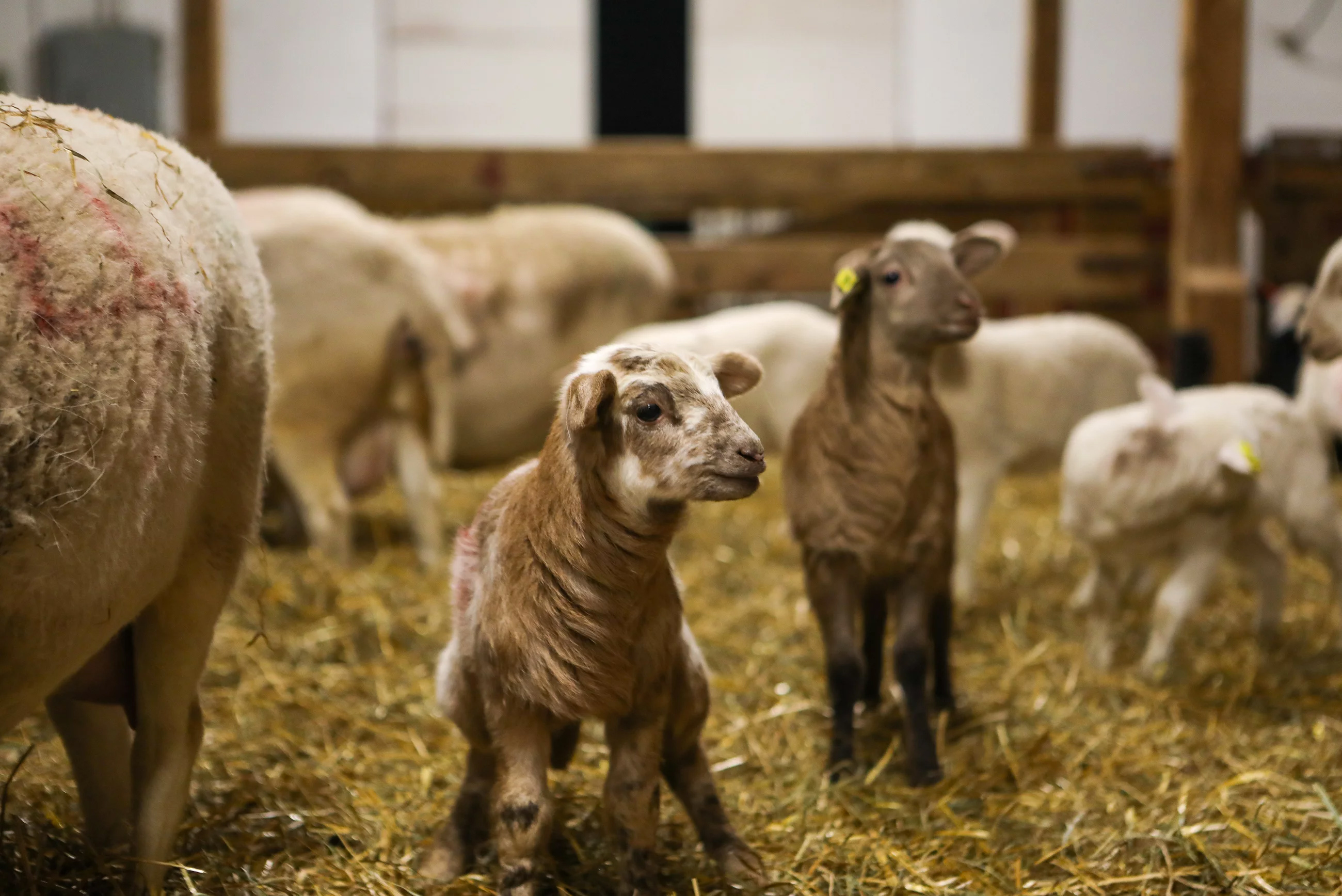 VIEW LARGER The newest baby lamb is named Artemis, and is the most colorful of the bunch.
VIEW LARGER The newest baby lamb is named Artemis, and is the most colorful of the bunch. "I saw the first lamb being born and we thought that was it," Mercado says.
"We were packing up. And then my sheep laid down again and we were like, 'She's still going,' So she stood up and then the second one just kind of came out."
Sheep Management is one of the better-known classes at the University of Maryland — so popular they have to limit it to students in the Animal Sciences program. It was the reason Mercado decided to attend the University of Maryland.
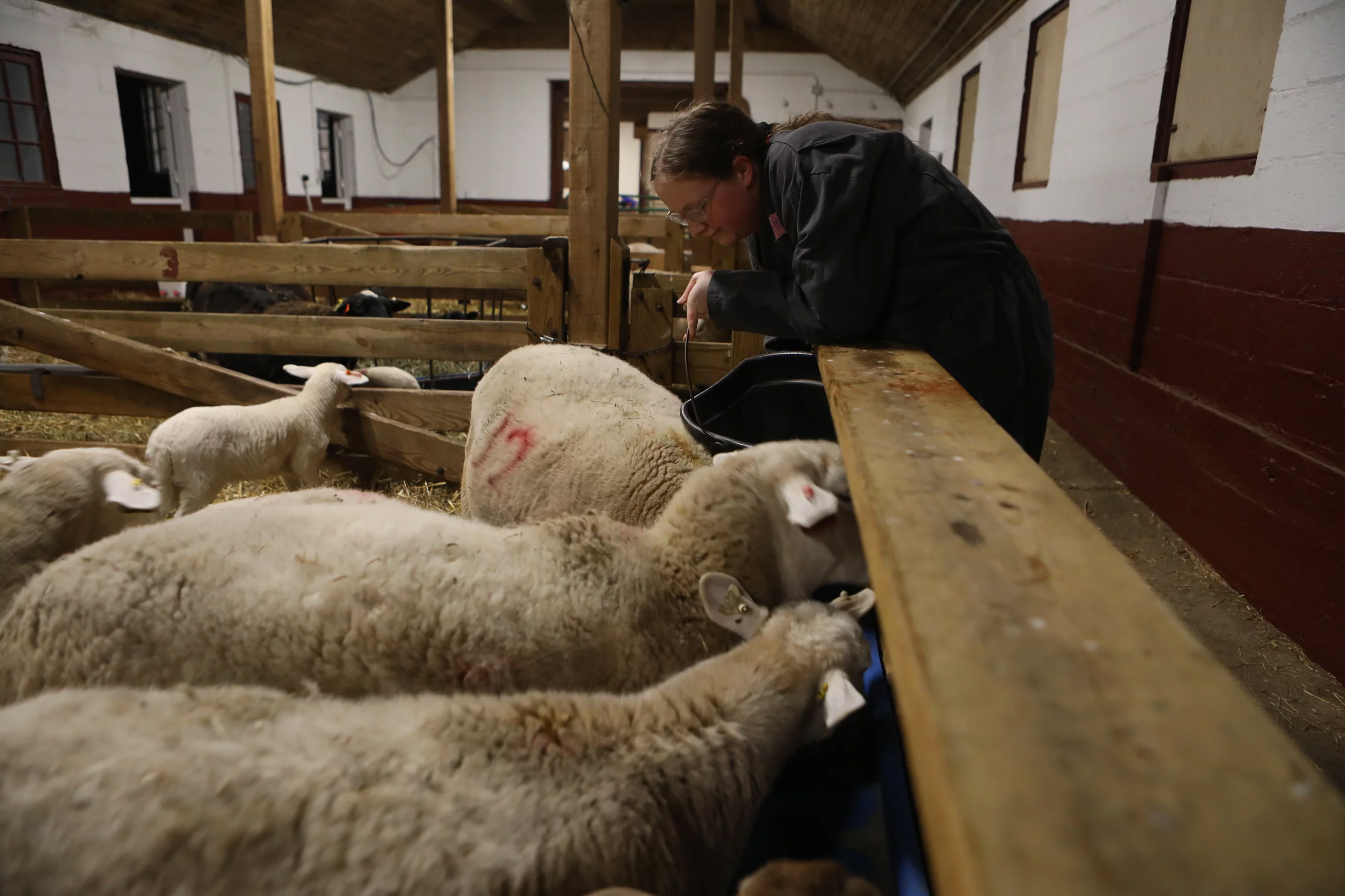 VIEW LARGER
VIEW LARGER 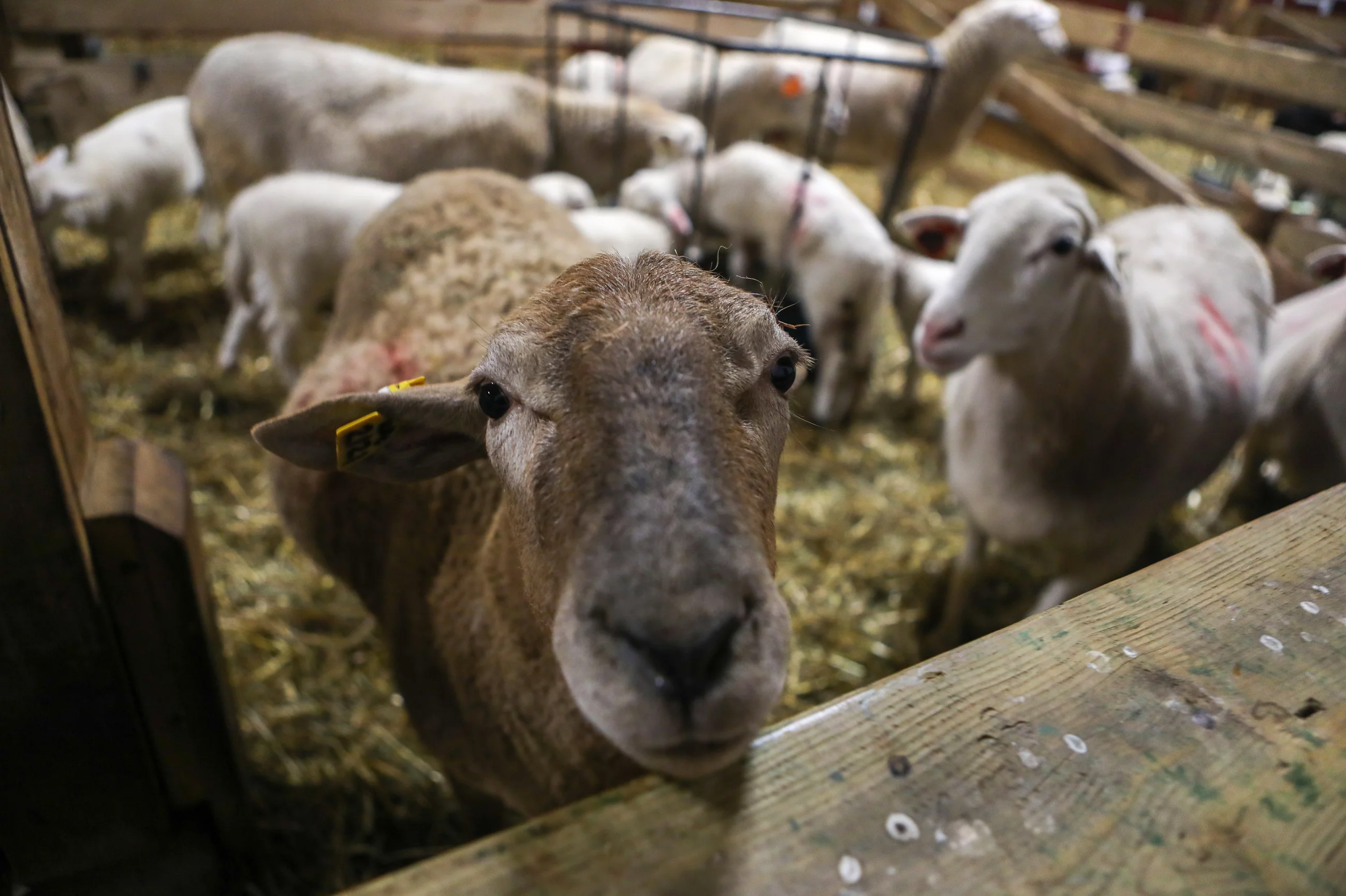 VIEW LARGER Lambs can be very curious and inquistive, McLean said.
VIEW LARGER Lambs can be very curious and inquistive, McLean said. When the lambs are coming, you bolt to the farm
Throughout the semester, each student is paired up and assigned to care for a pregnant ewe.
"You're on call. You have your phone with you at all hours of the night," Balcom, who taught the class for the last 12 years, said of her students.
There are a few signs that a sheep is about to give birth: they stop eating their grain, separate themselves from the flock and show other signs on their bodies. But it could happen at any hour of the day or night, and many of them will give birth overnight, Balcom says.
"They told me stories of running out of work, running out of a nice meal, waking up in the middle of the night and driving 45 minutes and trying hard not to speed, because you're never quite sure if the cop's going to believe you, that you're going to the birth of your lamb," Balcom says.
"They have run out of tests. They have left social gatherings to come and see their lambs, but they all absolutely love it."
 VIEW LARGER Wesley Peters, 19, a sophomore at UMD, feeds hay to the lambs during his lamb watch shift on Friday.
VIEW LARGER Wesley Peters, 19, a sophomore at UMD, feeds hay to the lambs during his lamb watch shift on Friday. 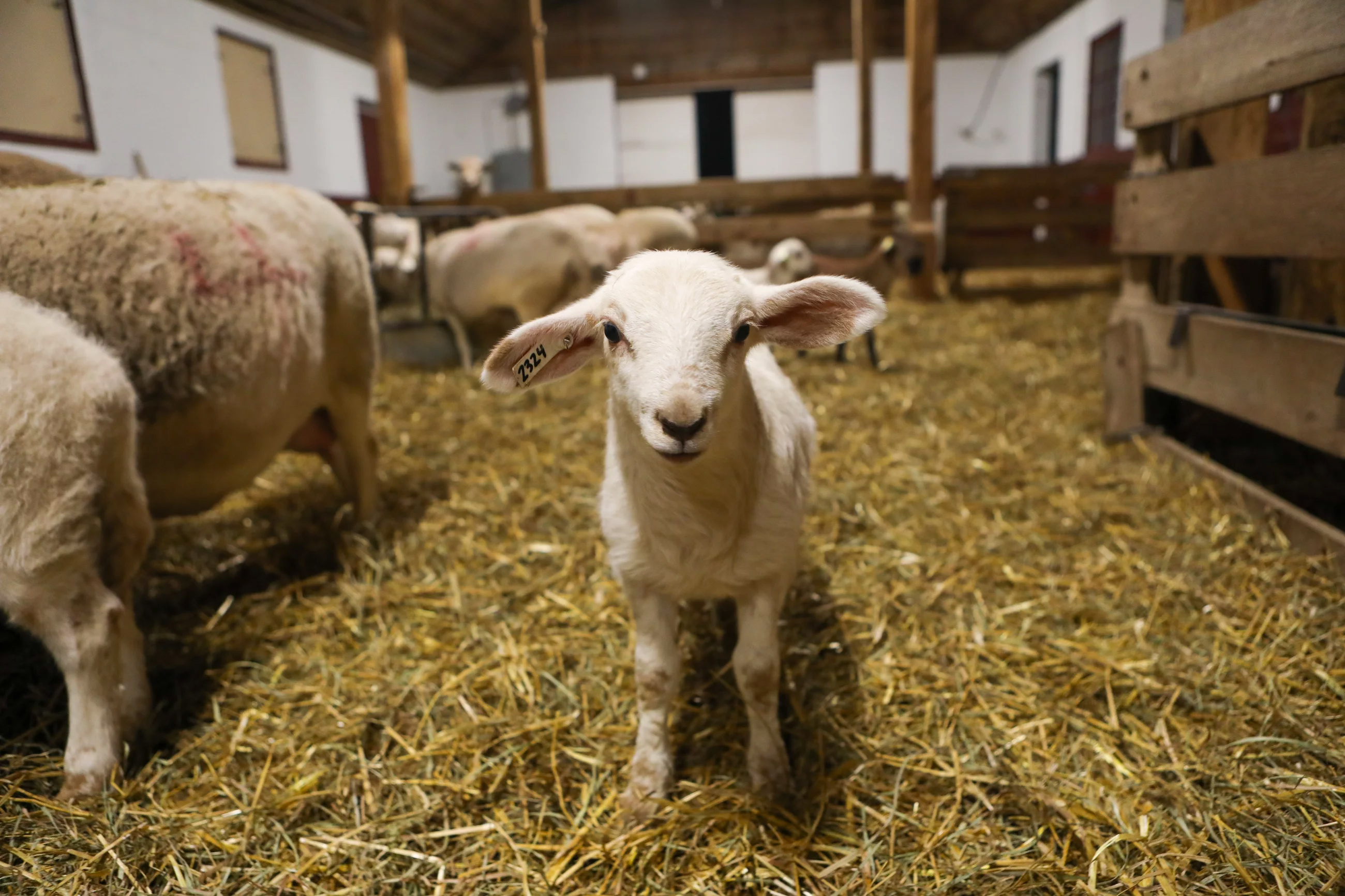 VIEW LARGER Baby lambs head to their own pen to eat pellets. The class has seen an unusually high number of triplets this year.
VIEW LARGER Baby lambs head to their own pen to eat pellets. The class has seen an unusually high number of triplets this year. The syllabus calls for boots that can withstand an acid wash and coveralls that get washed by the farm
After the lambs are born, students spend the rest of the semester learning the basics of raising them on a farm: giving vaccinations, trimming hooves, checking for parasites and keeping records.
Mercado said taking the temperature of the animals is a delicate and often challenging maneuver: a thermometer right in the rear end.
"It sounds easy, but when they don't want you to be doing that, then it's a lot harder to dodge when they're trying to kick you or pee on you," Mercado says.
Students always wear gloves while handling the lambs, but Mercado was surprised that the sheep weren't white and fluffy.
"I had never worked with sheep before, so I was expecting them to be really soft. But they are really oily and greasy," says Mercado. "I was not expecting my hand to come back brown from grease."
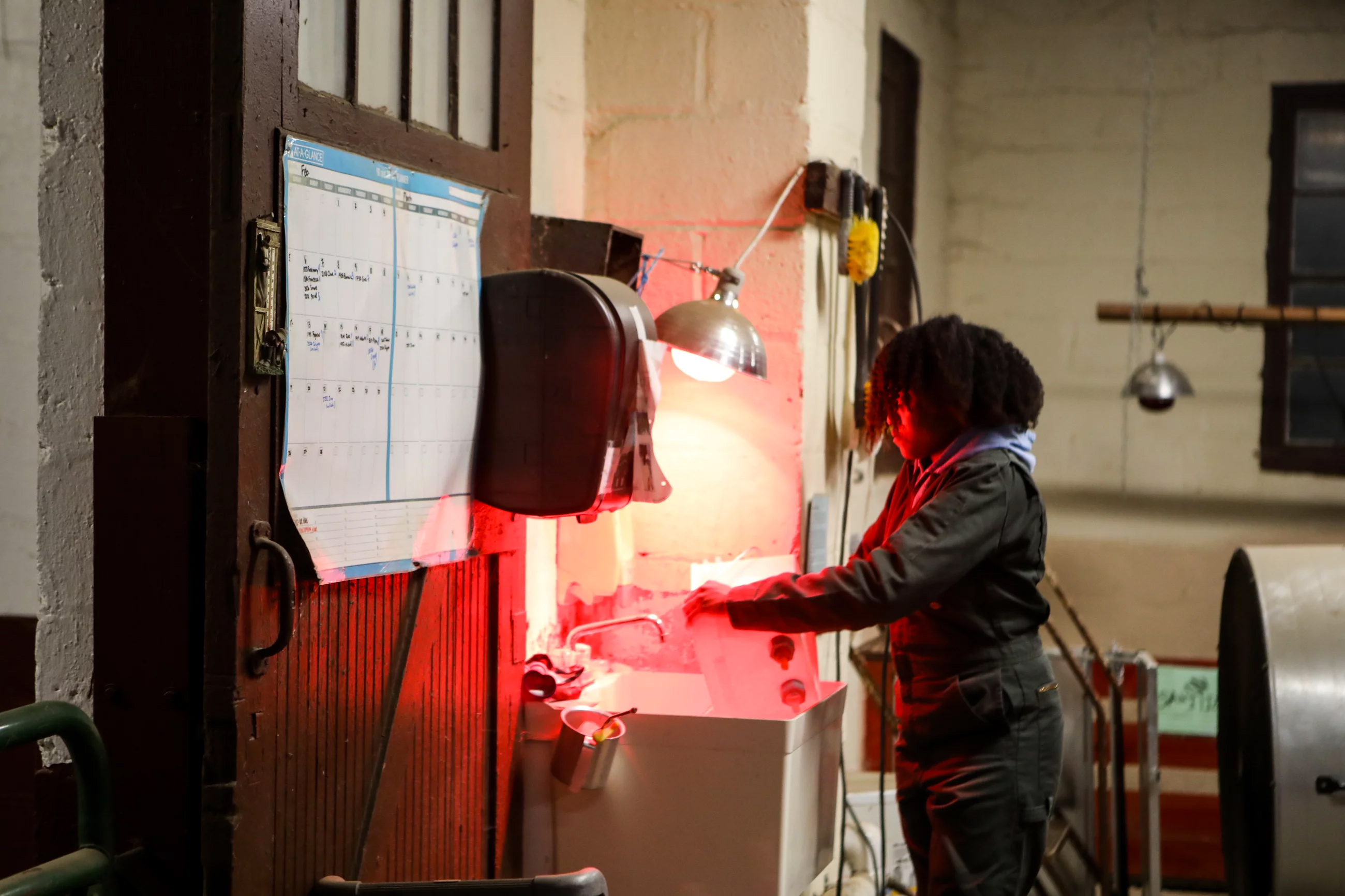 VIEW LARGER April Majors, 26, a student at UMD, gets the container with baby bottle nipples ready to feed the baby lambs who have struggled to get milk from their mother.
VIEW LARGER April Majors, 26, a student at UMD, gets the container with baby bottle nipples ready to feed the baby lambs who have struggled to get milk from their mother. 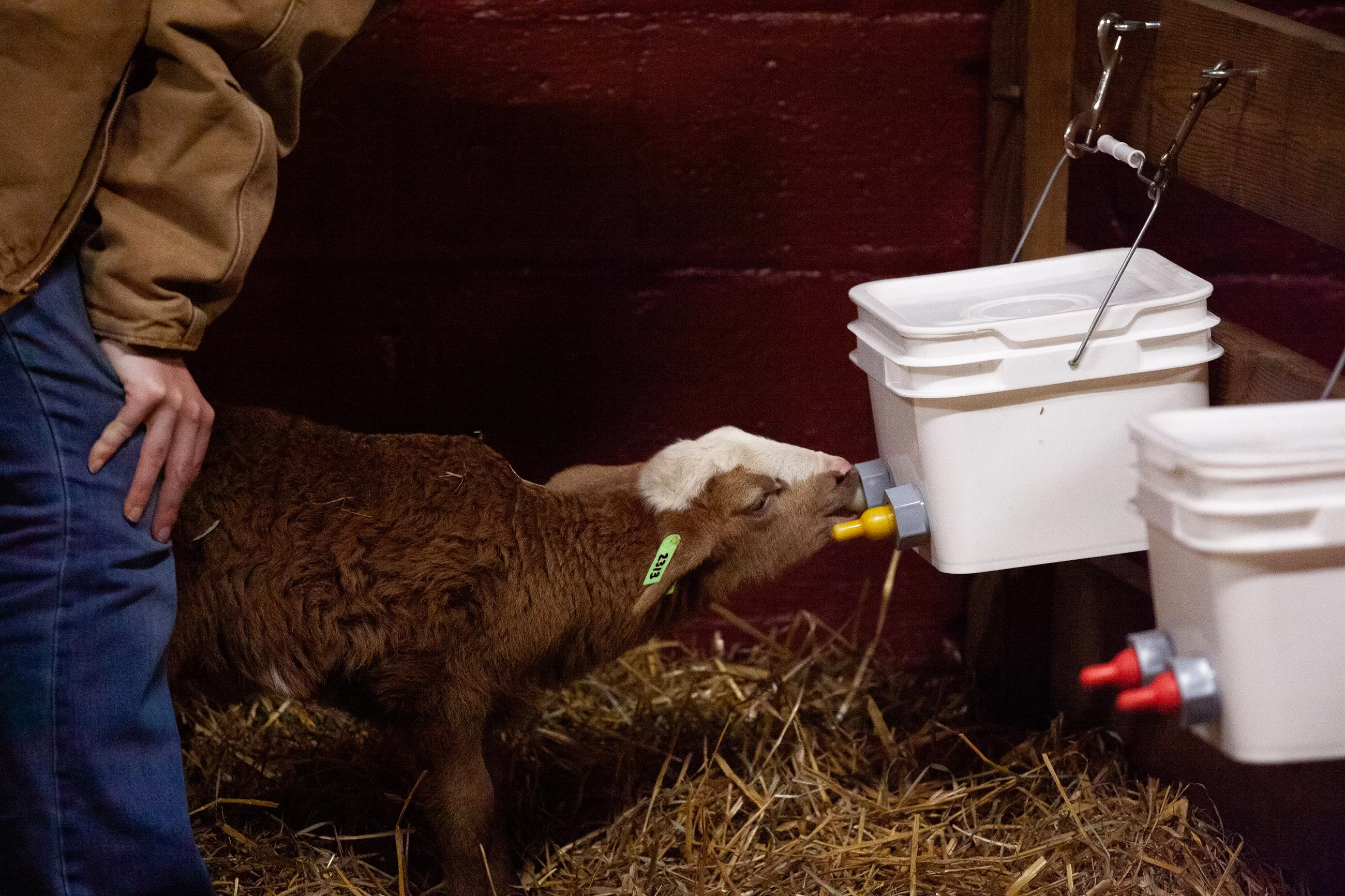 VIEW LARGER Megan McLean, the campus farm manager, helps feed baby lambs out of a makeshift container with baby bottle nipples.
VIEW LARGER Megan McLean, the campus farm manager, helps feed baby lambs out of a makeshift container with baby bottle nipples. Learning by doing
Mercado says she felt prepared by the classroom instruction before stepping foot on the farm. For one, she learned to never chase a sheep when taking their measurements. If one was reluctant or running away, just wait until it comes back.
One of Mercado's classmates' lambs got sick from eating too much grain and too little grass. It went blind and had to be bottle fed. One time, Mercado had to feed it.
"For someone who's just going in to work with cute animals and things, you're not expecting these kinds of things to happen," Mercado says. "It took me like over an hour to try and get her to drink barely any milk."
Ellee Noonan-Shueh took the class as a sophomore and was most surprised by how much control they needed to exert over the lambs.
"I mean, they're not wild animals. They are domesticated, but they still have very much their own free will," Noonan-Shueh says. "You obviously don't want to hurt them or do anything bad, but you're not going to."
Noonan-Shueh says they were assigned cleaning out the lamb quarters after a birth had taken place.
"That can be kind of gross because there's all these placental-like fluids and birth fluids everywhere and it's just mixed with hay and stuff," says Noonan-Shueh.
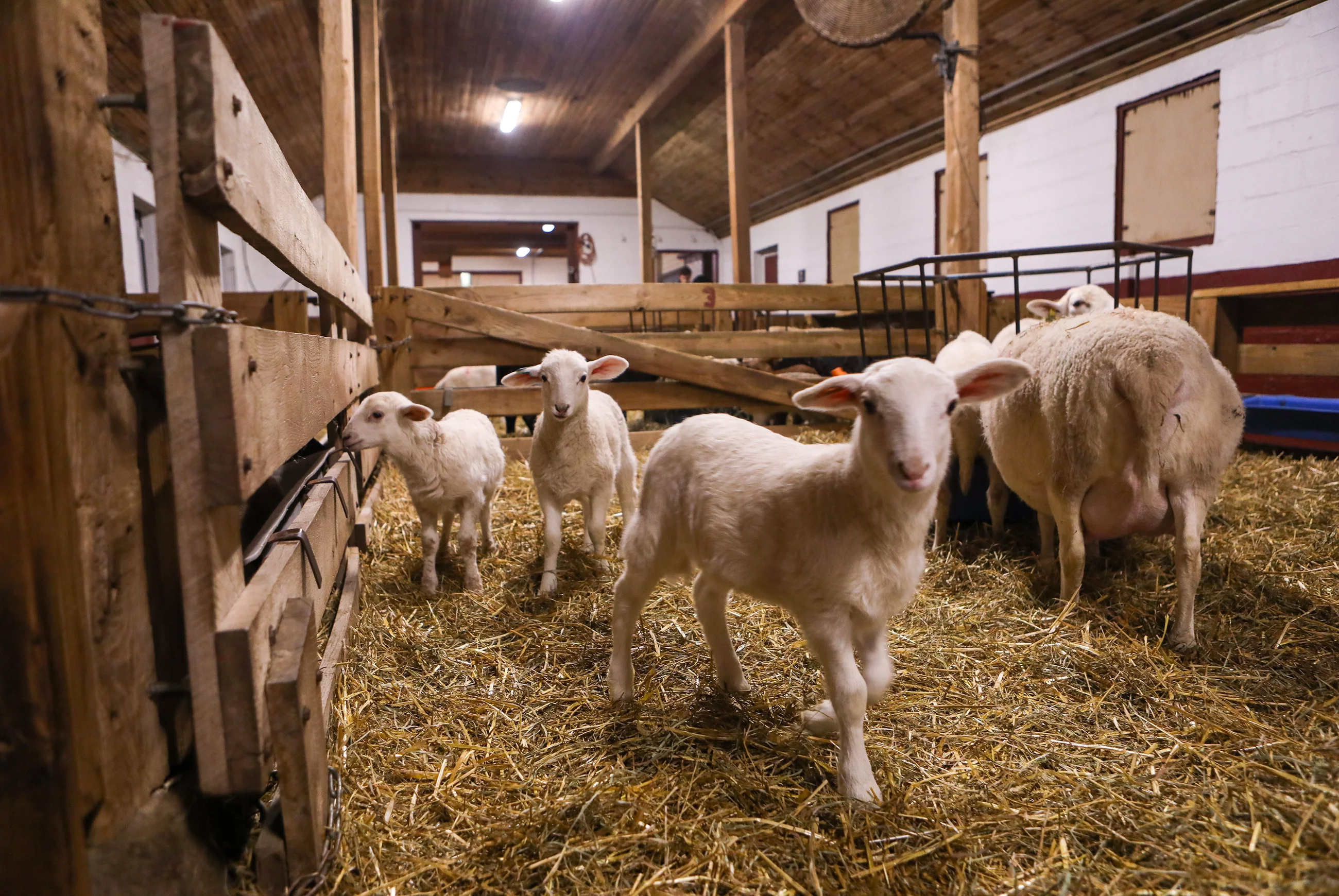 VIEW LARGER Baby lambs head to their own pen to eat pellets. The class has seen an unusually high number of triplets this year.
VIEW LARGER Baby lambs head to their own pen to eat pellets. The class has seen an unusually high number of triplets this year. 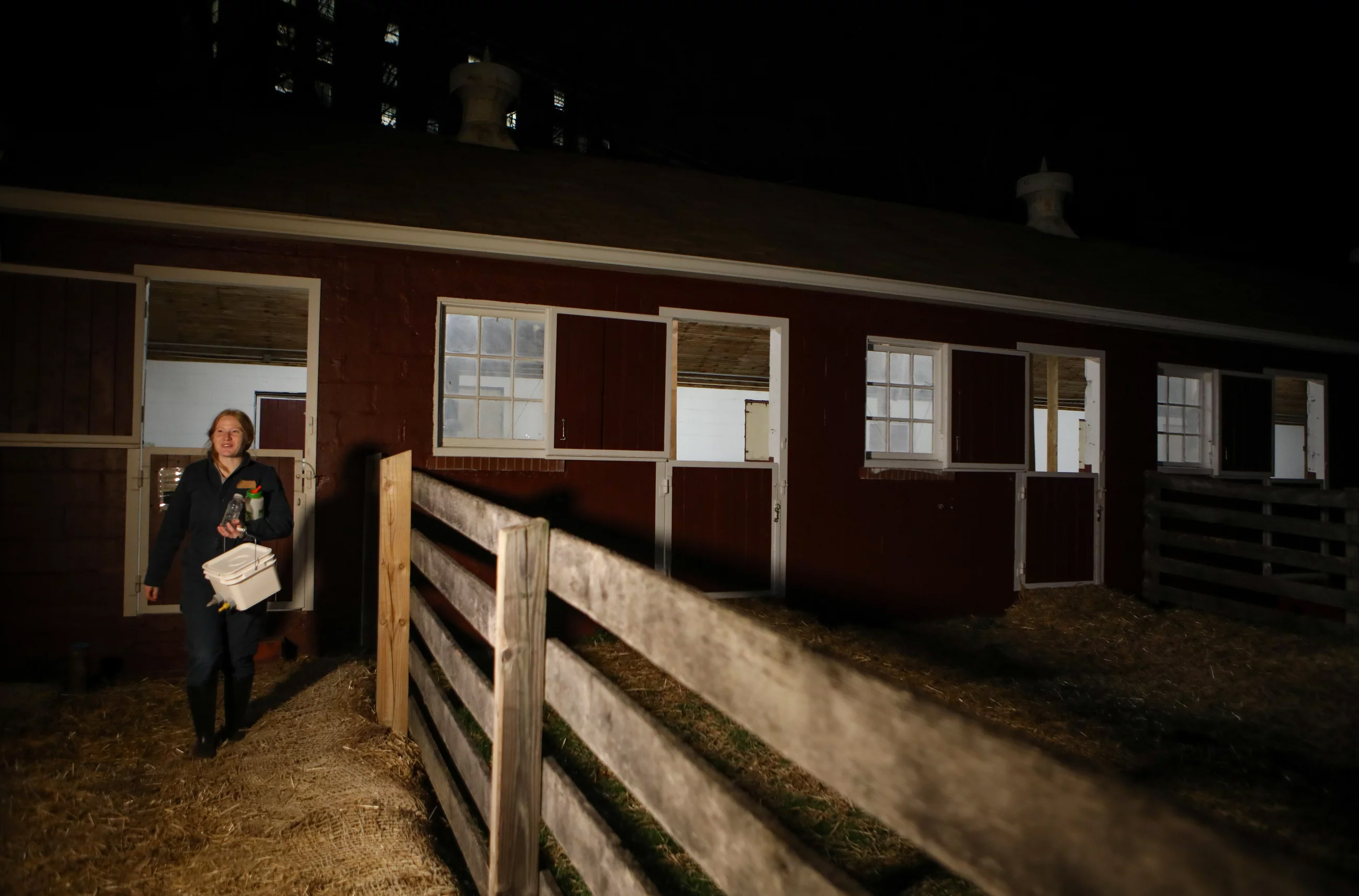 VIEW LARGER Stacey Revesz, 21, a senior at UMD, walks out of the barn during the end of her lamb watch shift.
VIEW LARGER Stacey Revesz, 21, a senior at UMD, walks out of the barn during the end of her lamb watch shift. Classroom learning isn't for everyone ... but raising lambs might be
The hands-on format makes the class so well-loved.
"I have several learning disabilities and teaching in the classroom by sitting at a desk and taking notes has never been my strong point," said Claire Jennings who took the class last spring as a sophomore and is now a Teaching Assistant.
"I have to adapt and do all sorts of different things in order to be able to process the information. But a lot of the hands-on classes I take, I get it in one go because actually doing something with my hands rather than sitting and trying to retain something just works so much better for me."
Professor Balcom says both the instructors and students get closer with the animals than is typical for a commercial farm.
"At some point we have to kind of start distancing ourselves from them because we are going to sell them some for breeding and some for meat," Balcom said. "And that can be really hard on students whose primary experiences have always been with pets."

By submitting your comments, you hereby give AZPM the right to post your comments and potentially use them in any other form of media operated by this institution.